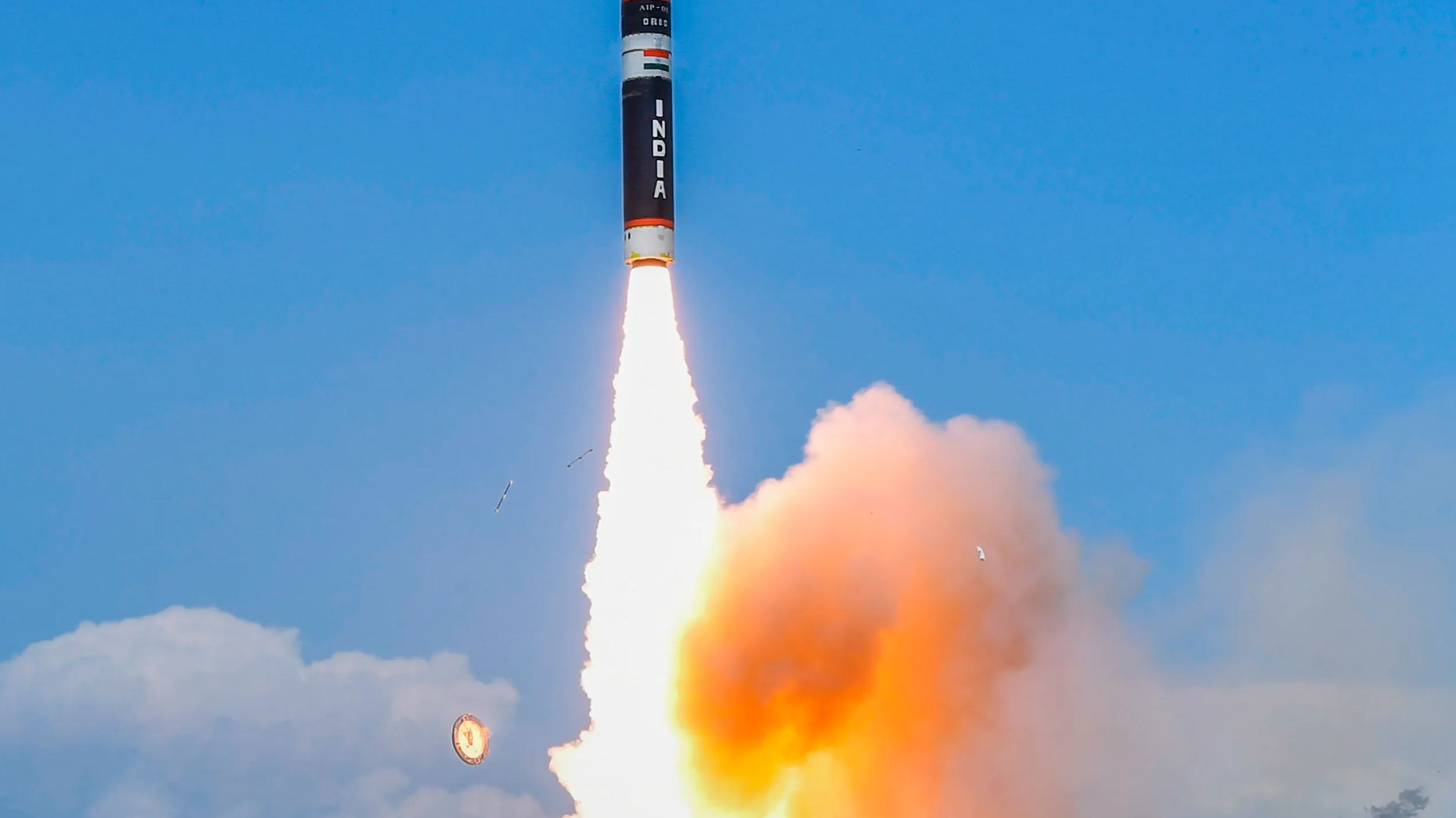India on Wednesday successfully test-fired Agni-5, a surface-to-surface strategic missile capable of hitting targets up to 5,000 km away, in what is being seen as major boost to the country’s nuclear deterrence against China. The nuclear-capable missile was launched around 7:50 pm from APJ Abdul Kalam Island in Odisha, the defence ministry said in a statement, adding the test-firing was in line with India’s commitment to ‘No First Use.’ The successful test-firing of the intercontinental ballistic missile that uses a three-stage solid fuelled engine comes amid lingering border tensions between India and China.
Also Read | Upcoming rocket test may launch South Korea’s space programme
The Defence Research Development Organisation (DRDO)-built Agni 5 has been under development for over a decade. The first test of the missile was carried out in April 2012 while the last one nearly three years ago.
India has already deployed Agni 1 to 4 missiles with ranges from 700 km to 3,500 km.
In June, the DRDO successfully test-fired a new generation of ‘Agni’ class nuclear-capable ballistic missile that has a range of up to 2,000 km. China has missiles like Dongfeng-41 having ranges between 12,000-15,000 km.
Earlier this month, Financial Times reported that China had in August tested a hypersonic, nuclear-capable missile that missed its target by over 32 km. The hypersonic glide vehicle that circled the Earth at low orbit was launched through a Long March rocket. The launch was unusually kept under the wraps even as China’s progress on hypersonic weapons “caught US intelligence by surprise.”
China, United States, Russia and at least five other countries are working on hypersonic technology that can deliver nuclear weapons at more than five times the speed of sound.
Because of their low trajectory, hypersonic missiles can reach their target more quickly than ballistic missiles. They can also potentially escape defense systems such as the ones developed by countries like US against cruise and ballistic missiles.







